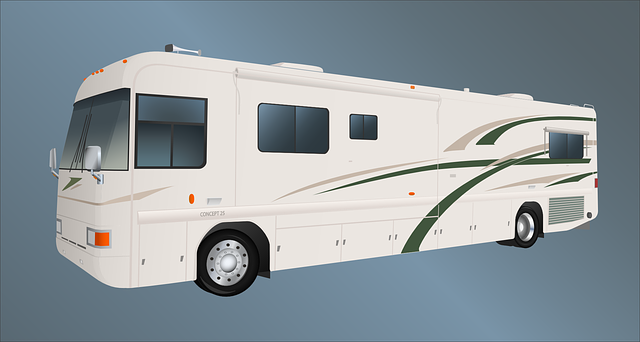To effectively manage your RV's power needs and ensure long-term reliability of your batteries, it's crucial to understand the differences between RV batteries, particularly the lead-acid and deep-cycle types. Deep-cycle batteries are preferred for off-grid use in RVs due to their durability across multiple charge/discharge cycles. Avoid overcharging these batteries and maintain a partial state of charge to prevent performance degradation. For lead-acid batteries, regular maintenance like checking water levels is necessary. Implement smart chargers that adapt to the battery's condition and temperature for optimal charging. Store RV batteries in cool, dry environments and keep them between 50% and 75% charged during storage to prevent sulfation. Regularly inspect and clean terminals, perform equalization charges, and monitor voltage levels to maintain peak performance. If you notice issues like poor charge retention or long recharging times, check battery terminals, ensure proper charging sources are available, and consider the battery's age and condition for potential replacement. RV batteries typically have a lifespan of 3 to 5 years, so regular health checks using multimeters or battery testers are vital for timely replacements and maintaining an uninterrupted power supply during travel. By following these maintenance practices, you'll ensure your RV batteries remain dependable sources of energy throughout your adventures.
Embarking on an RV journey means relying on your vehicle’s battery for power, making its maintenance crucial for uninterrupted adventure. This comprehensive guide delves into ‘Top Tips for Caring for Your RV Battery,’ covering everything from understanding different RV battery types and their functions to optimal charging methods for sustained health. You’ll discover essential storage and maintenance tips to keep your batteries ready for the road, learn common issues and how to troubleshoot them, and get clear signs on when it’s time for a replacement. Keep your RV’s energy source in peak condition with these insightful strategies tailored for RV battery care.
- Understanding Your RV Battery Types and Functions
- Optimal Charging Practices for Long-Term RV Battery Health
- Tips for Proper Storage and Maintenance of Your RV Batteries
- Troubleshooting Common Issues with RV Batteries
- When to Replace Your RV Battery: Signs and Considerations
Understanding Your RV Battery Types and Functions

When it comes to maintaining your recreational vehicle (RV), understanding your RV battery types and functions is paramount for ensuring that your adventures on the road are uninterrupted by power issues. There are primarily two types of batteries commonly used in RVs: lead-acid and deep-cycle batteries, with deep-cycle batteries being more suitable for RV applications due to their ability to withstand a high number of charge/discharge cycles. Lead-acid batteries, on the other hand, tend to be less durable over time and are typically used as starting or auxiliary power sources in RVs.
Understanding the function of your RV battery is also crucial. The chassis battery, often a lead-acid type, starts the vehicle’s engine and powers its lighting systems. In contrast, the coach (or house) battery, which is usually a deep-cycle battery, provides power to all the RV’s amenities such as the refrigerator, water pump, furnace, and any 12-volt devices when not connected to shore power. To maximize the lifespan of your RV batteries, it’s important to keep them fully charged and avoid allowing them to deep discharge, as this can shorten their overall capacity. Regular maintenance, including checking fluid levels for lead-acid batteries or monitoring state of charge indicators for sealed or absorbed glass mat (AGM) batteries, will contribute to the reliability of your RV’s power system. Additionally, investing in a solar charging setup or a generator can help supplement power needs and extend your RV’s off-grid capabilities. Properly understanding and caring for your RV batteries ensures that you have the energy you need wherever your travels take you.
Optimal Charging Practices for Long-Term RV Battery Health

When it comes to maintaining the longevity and health of your RV batteries, adhering to optimal charging practices is paramount. Unlike everyday car batteries, RV batteries are deep-cycle types designed for frequent discharges and recharges. To ensure these batteries serve you reliably for years, avoid overcharging them, which can lead to a shortened lifespan. Charge the battery only when necessary; keeping it at a partial state of charge for extended periods can degrade its performance. When charging, use a charger with a float mode or maintenance mode feature, which provides a gentle current to keep the battery topped up without overcharging. It’s also wise to invest in a quality charger that automatically adjusts the charge level based on the battery’s condition and temperature, as environmental factors can significantly impact charging efficiency. Regularly check the water levels in lead-acid batteries if they are not sealed, as proper fluid maintenance is crucial for their operation. By following these practices, you can extend the life of your RV battery and ensure it remains a dependable power source for all your adventures.
Tips for Proper Storage and Maintenance of Your RV Batteries

When it comes to maintaining your recreational vehicle’s (RV) batteries, proper storage and maintenance are key to ensuring their longevity and reliability. To begin with, always store your RV batteries in a cool, dry place when not in use. Temperature fluctuations can significantly impact battery life; extreme heat or cold can degrade the battery’s performance over time. Keep the batteries charged between 50% and 75% of their capacity during storage to prevent sulfation, a process where sulfur crystals form on the lead plates, which can impair battery function. Additionally, regularly inspect the battery terminals and connections for corrosion or looseness, as these issues can impede the flow of electricity and shorten the battery’s lifespan.
For ongoing maintenance while in use, monitor the water levels in flooded lead-acid batteries if applicable, adding distilled water as necessary to maintain proper electrolyte concentration. Regular equalization charges can also help maintain the battery’s health by keeping the active material uniformly distributed on the plates. Use a reliable battery charger designed for RV batteries, and consider investing in a smart battery maintainer that automatically adjusts charging levels to match the battery’s needs. These devices can prevent overcharging, which can damage the battery, and provide consistent care even when you’re away from your RV. Regularly cleaning the battery terminals with a solution of baking soda and water can further ensure good electrical contact, and checking the voltage with a multimeter can help you detect issues before they become problems. By following these storage and maintenance tips for your RV batteries, you can enjoy uninterrupted power for all your RV adventures.
Troubleshooting Common Issues with RV Batteries

When it comes to troubleshooting common issues with RV batteries, understanding the typical challenges can save you from unexpected power loss during your travels. If your RV battery is not holding a charge as expected, start by inspecting the battery connections for corrosion or loose terminals. A thorough cleaning of the terminals and secure connection can often resolve this issue. Additionally, ensure that the battery is fully charged; some RV batteries may appear discharged if they are not receiving proper charging from the solar panels, generator, or shore power.
Another frequent concern with RV batteries is sulfation, which occurs when sulfur crystals form on the lead plates, reducing the battery’s ability to hold a charge. This issue can be mitigated by ensuring regular and consistent charging cycles and by avoiding deep discharges. It’s also crucial to store your RV battery properly when not in use; for instance, if left in a hot environment, the battery may overcharge and self-discharge, leading to reduced lifespan or even failure. Regular maintenance, such as checking electrolyte levels and adding distilled water if necessary, can prevent these problems and extend the life of your RV battery. Remember to also monitor the alternator and charge controller settings to ensure they are properly configured for your RV’s battery system. By addressing these common issues with RV batteries promptly, you can maintain a reliable power source for all your RV adventures.
When to Replace Your RV Battery: Signs and Considerations

When the time comes to replace your RV battery, it’s crucial to identify the signs early to avoid unexpected power losses during your travels. A aged battery may struggle to hold a charge as effectively as it once did; if you notice your RV battery is not lasting as long as it used to between charges, or if it takes significantly longer to recharge, it might be nearing the end of its lifespan. Additionally, consistent bulging or swelling in the battery case can indicate that the active materials inside are degrading, which is a clear sign that it’s time for a new battery. Another important indicator is frequent requirements of distilled water if you have a lead acid battery; if you find yourself topping off the water regularly, the plates may be deteriorating and the battery might need replacement. Furthermore, if the voltage readings are consistently low or the battery fails to start your RV on the first try, these could also be symptoms of a battery that has lost its capacity to perform optimally. To maintain the reliability and functionality of your RV’s electrical systems, it’s essential to stay attuned to these signs and replace your battery as needed, typically every 3 to 5 years, depending on usage and maintenance. Regularly testing your battery’s charge and health with a multimeter or a battery tester can help you anticipate and plan for its replacement, ensuring that your RV adventures are uninterrupted by power issues.
When it comes to maintaining your recreational vehicle (RV) battery, a few key practices can make all the difference in ensuring its longevity and reliability. This article has provided comprehensive guidance on understanding the various types of RV batteries, their functions, and the optimal charging practices that contribute to long-term health. Additionally, we’ve covered essential storage and maintenance tips to keep your batteries performing optimally, even when not in use. Troubleshooting common issues with RV batteries is also vital for timely resolutions and minimizing downtime. Ultimately, knowing when to replace your RV battery, as outlined in the signs and considerations section, is crucial for a safe and enjoyable RV experience. By following these tips and maintaining a consistent routine, you’ll be well-equipped to handle the energy demands of your RV adventures with confidence.
